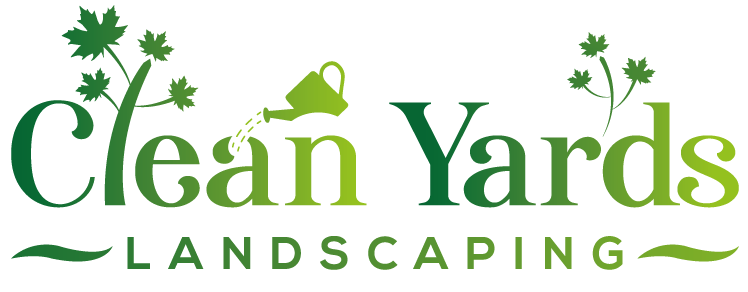Nepean Garden Revival: Fix Heat Damage Before Fall
Quick Recovery Guide
- Assess heat damage: Look for wilting, crispy edges, yellowing leaves, and brown lawn patches.
- Water deeply and consistently, especially in the morning.
- Gently prune away dead material, but give stressed plants time to recover.
- Improve soil with compost and apply mulch to retain moisture and regulate temperature.
- Revitalize lawns through aeration and overseeding during the cooler fall weather.
- Plant hardy perennials, bulbs, shrubs, and trees now for a head start next spring.
Need help assessing the damage or planning the recovery? Request a free estimate today!
Introduction: Phew, That Was a Hot One! Reviving Your Nepean Garden Post-Summer
Wow, that Ottawa summer certainly brought the heat, didn't it? If your garden in Nepean or nearby Barrhaven is looking a bit frazzled after weeks of sunshine and humidity, you're definitely not alone! Our poor plants and lawns often take a beating during the peak heatwaves. But here’s the good news: as the intense summer sun starts to ease up, we're moving into the *perfect* window for garden recovery.
This late summer to early fall period is absolutely crucial for helping your landscape bounce back. Why now? The cooler temperatures, gentler sunlight, and (hopefully!) more consistent rainfall mean much less stress on your turf, shrubs, and flowers. It's nature's signal that it's time to repair damage from the heat and get ready for the colder months ahead.
Don't worry if your flower beds look a bit droopy or your lawn has seen better days. Think of this time as garden rehab! In the sections below, we'll walk you through simple, practical steps to breathe new life into your outdoor space. We'll cover everything from essential lawn care fixes and smart pruning tips to deciding what you might want to plant now for a great show next year. Let's get that Nepean garden looking refreshed and ready for fall!
Decoding the Damage: How Ottawa's Summer Heat Stressed Your Garden
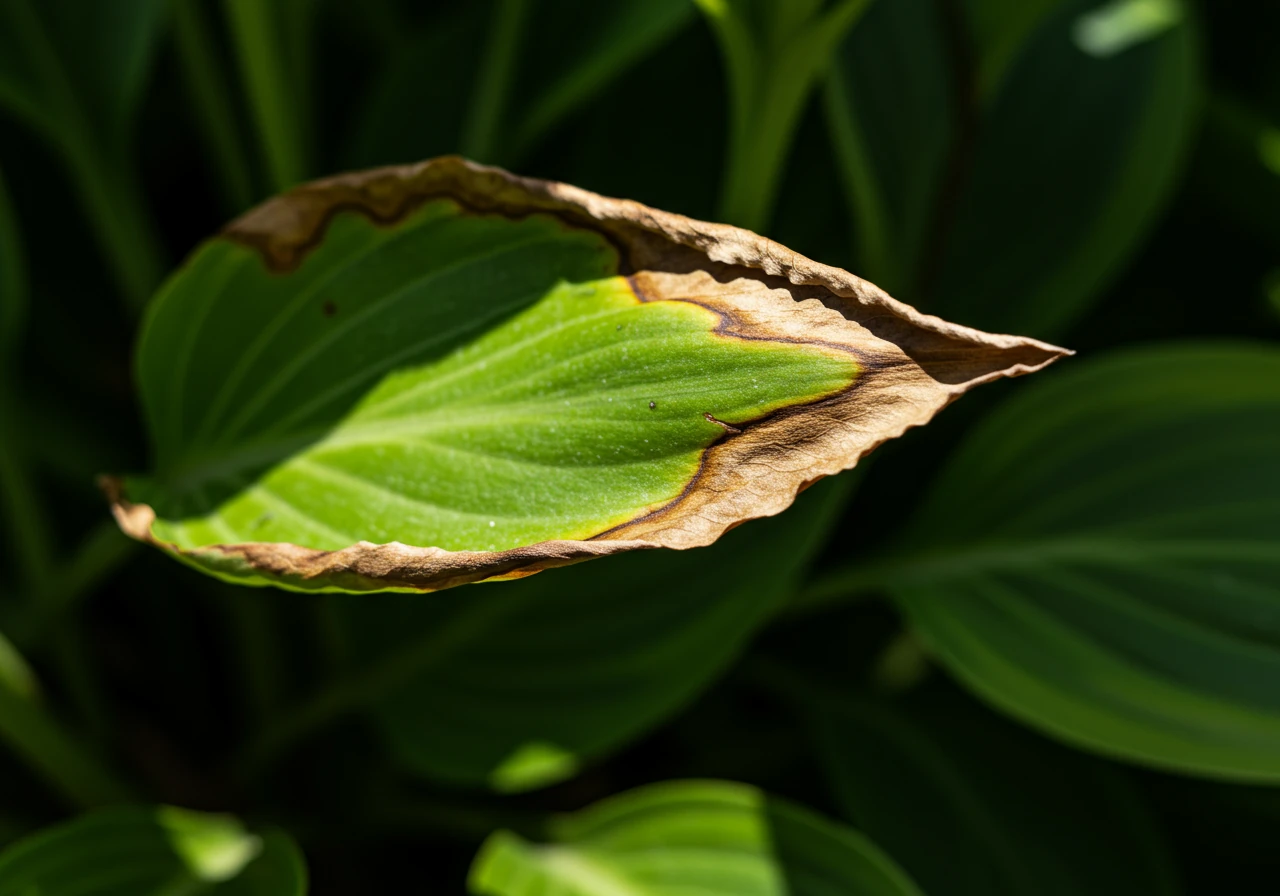
Okay, let's be honest. That Ottawa summer sun felt less like a gentle hug and more like a wrestling match for our poor gardens, right? If you walked through your yard in Greely or Nepean recently and thought things looked a bit… well, *crispy*, you're seeing the classic signs of summer heat stress. It’s like your plants got a sunburn, and who can blame them after those heatwaves!
So, what does this battle fatigue look like on your plants and lawn? Keep an eye out for these tell-tale signs:
- The Wilting Warrior: Leaves drooping dramatically, looking tired and thirsty even if you watered recently. Sometimes they perk up a bit in the cooler evening air, sometimes they just stay sad.
- Crispy Critters: You might notice leaf edges turning brown, dry, and brittle. This often happens first on the parts of the plant that get the most direct, intense afternoon sun.
- Yellow Fever (Not the Fun Kind): Instead of vibrant green, leaves might start turning yellow or pale. Sometimes brown patches develop right in the middle of the leaf, almost like a scorch mark.
- Lawn Lament: Uh-oh. Are big, irregular brown patches appearing on your turf? Does the grass feel dry and crunchy underfoot instead of soft and springy? That’s your lawn crying out for help.
- Flower Flop & Fruit Fail: Heat stress can make flowers fade much faster than usual, or cause buds to simply give up and drop off before they even get a chance to open. Veggie gardeners might see blossoms dropping or developing tough, leathery spots (sunscald) on ripening fruits.
Common Summer Heat Damage Symptoms
*Illustrative data representing common observations.
But *why* do our green buddies react this way? It’s all about survival. When the temperature skyrockets and the sun beats down, plants try desperately to conserve water. They close tiny pores on their leaves (called stomata) to reduce moisture loss. Think of it like us trying not to sweat too much on a crazy hot day! The downside is, closing these pores also slows down photosynthesis (how plants make food) and their natural cooling process (transpiration – basically, plant sweat).
If the soil also gets baked dry and hot, the roots have a really tough time pulling up enough water to keep everything hydrated and functioning. Ottawa's varied soil types add another layer to this. Heavy clay soil, common in parts of Nepean, can hold water well *but* can also bake hard like concrete in intense heat, restricting roots. Sandier soils, found in areas like Manotick, drain super fast, meaning they dry out much quicker during hot spells. Neither is ideal in extreme heat without careful management! Applying lessons learned from using spring mulch tips for clay soil can really help moderate soil temperature and retain moisture next year, giving roots a fighting chance.
It’s important not to immediately jump to conclusions about pests or diseases, though. Heat stress damage often looks more widespread or affects the most sun-exposed parts uniformly. Pests usually leave specific clues like chew marks or webbing, while diseases might create distinct spot patterns, rings, or fuzzy growth.
Understanding this heat damage is the first step to helping your garden recover. A stressed lawn, for example, really struggles when the soil is compacted. That’s why improving lawn resilience with spring aeration is so beneficial *before* summer hits, allowing water and air to reach stressed roots more easily. Consistent watering is vital during heat waves, underscoring the importance of proper care of your irrigation system to ensure it delivers water efficiently when needed most. Now that the worst heat is likely behind us, it's the perfect time to gently clean up the obviously dead or damaged parts and start your Nepean fall garden prep. If looking at the crispy bits feels a bit overwhelming after the summer battle, getting help from a Nepean garden clean-up service can quickly get things looking tidy again. Tackling this recovery now sets your garden up for a much healthier transition into fall and winter, and remember, if the damage seems extensive or you need a hand planning the recovery, exploring professional landscaping services is always a great option. Find us easily on Google Maps!
Garden CPR: First Aid Steps for Heat-Stressed Plants
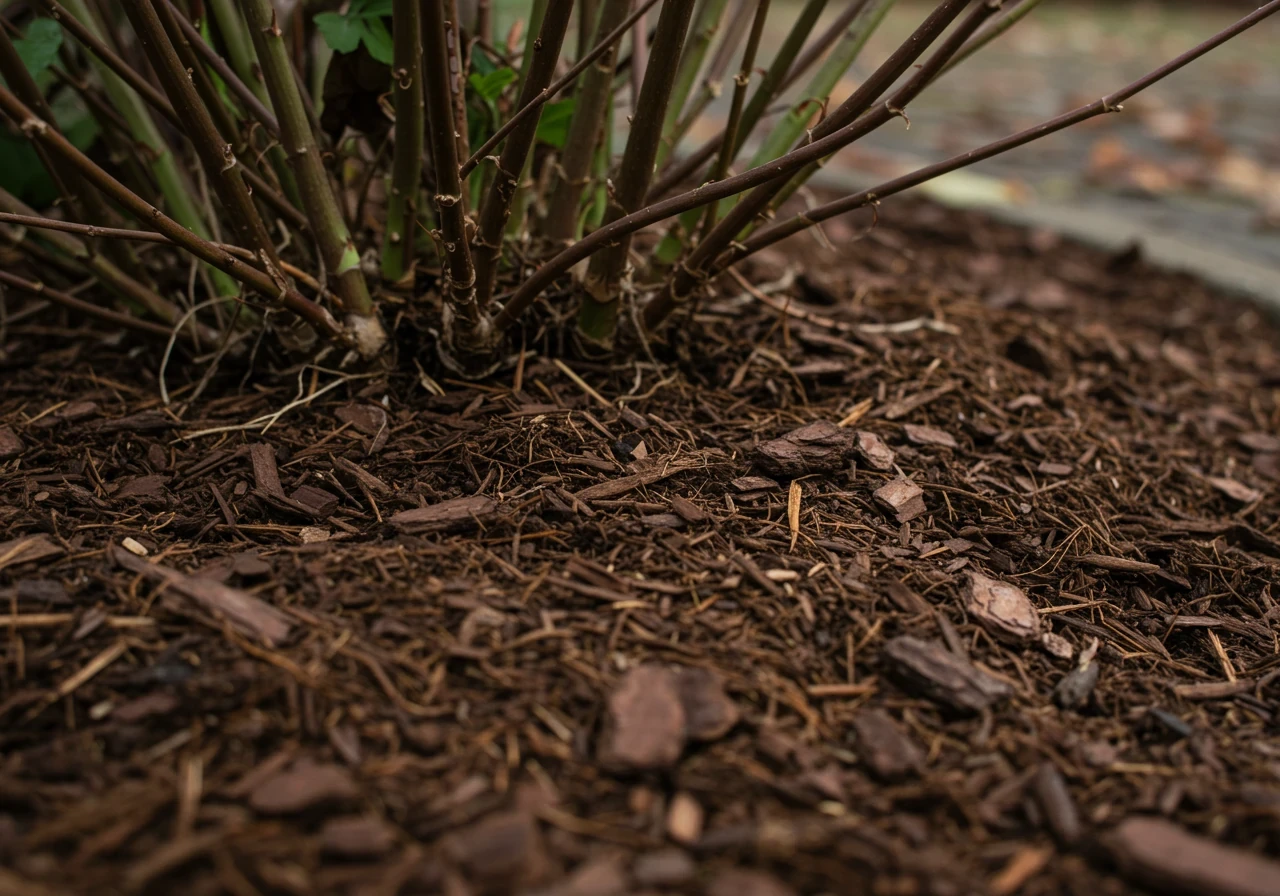
Okay, deep breaths. Your garden might look like it went ten rounds with the summer sun and lost, but don't call the time of death just yet! Just like us after a marathon (or maybe just a hot walk around Barrhaven), plants need some targeted first aid to recover from heat stress. Think of these steps as CPR for your cherished perennials, shrubs, and veggies.
Hydration Station - Water Wisely
Forget those quick, shallow sprinkles! Stressed plants need a *deep* drink. Water thoroughly early in the morning before the sun gets intense. Aim the water directly at the soil surface around the base of the plant, not on the leaves (which can sometimes encourage fungal issues in humid Ottawa weather). How much is enough? Stick your finger about two inches into the soil near the plant. If it feels dry, it's time to water deeply until that moisture penetrates down. In late summer and early fall, plants still need consistent moisture, even if the air feels cooler. Deep watering encourages roots to grow downwards, making them tougher for future heatwaves. Less frequent, deep watering is much better than a daily splash.
Gentle Triage - Prune the Positively Passed
Now, let's do some gentle cleanup. Get your clean pruners and snip off any leaves or stems that are *completely* brown, crispy, and obviously dead. Removing this dead material does two things: it stops the plant wasting energy trying to support goners, and it improves air circulation, which helps prevent disease. *BUT* – be conservative! Don't hack away at anything that's just wilted or slightly yellowed. Give those parts a chance to recover with proper watering. If the thought of sorting the dead from the potentially recoverable feels a bit much, or you have widespread browning, calling in a Nepean garden clean-up service can whip things into shape quickly.
Soil Spa Treatment - Compost and Mulch Magic
Healthy soil is the foundation of plant recovery. Gently work some good quality compost into the top layer of soil around your stressed plants. This adds vital nutrients and improves the soil's ability to hold moisture – super important! After adding compost, apply a 2-3 inch layer of organic mulch (like shredded bark, *not* stone) around the base of the plant, keeping it an inch or so away from the stem itself. Mulch is like a protective blanket: it helps keep the soil cooler, retains precious moisture so you water less, and suppresses weeds that compete for resources. These steps not only aid immediate recovery but also build resilience for the future, setting the stage for amazing landscape transformations down the road. Plus, using compost and mulch are great eco-friendly choices!
Patience, Grasshopper
Plant recovery isn't instant. Give your plants time to respond to the TLC. Keep an eye out for new, healthy growth – that's your sign things are turning around! Some plants bounce back faster than others. If after a few weeks of consistent care, a plant still looks truly miserable, it might sadly be too far gone. Don't be discouraged; gardening always involves some trial and error. For larger scale recovery efforts or tackling multiple stressed areas, consider an Ottawa property cleanup service to get a fresh start. Need help assessing the damage or figuring out the next steps for your whole garden? Many homeowners find value in getting a professional eye on things; you can easily book a free estimate to discuss options. Sometimes a little expert help from an Ottawa garden clean-up service makes all the difference, and you can even see what our clients say about their experiences.
Lawn Rehabilitation: From Crispy Carpet to Green Oasis
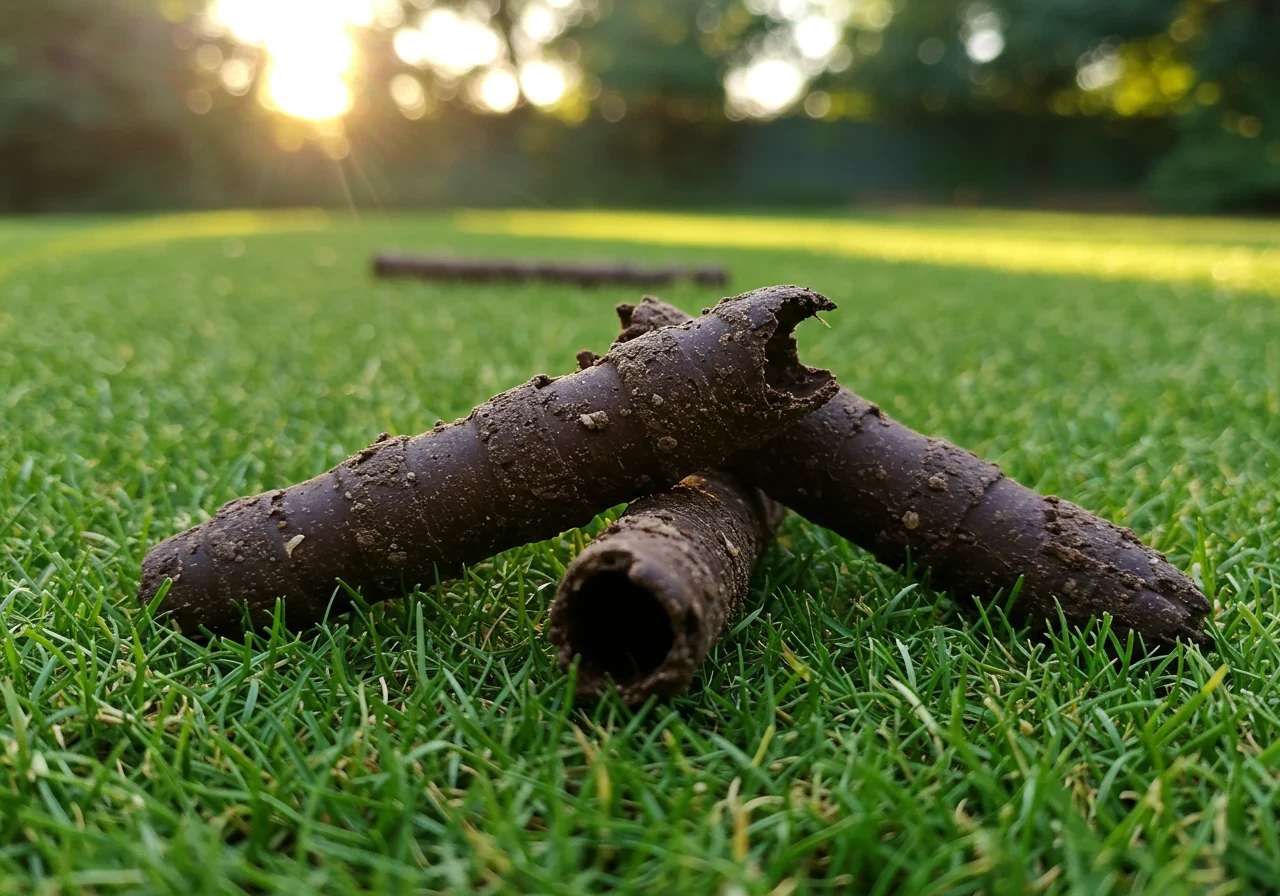
Alright, let's talk turf. Did your lawn survive the Ottawa summer heat looking less like a lush green carpet and more like… well, slightly sad, crunchy toast? You're not alone! Many lawns across Barrhaven and Manotick took a beating. But fear not, lawn warrior! Late summer and early fall are prime time for lawn CPR. Forget waiting until next spring; the work you do *now* is your ticket to a glorious green comeback.
Think of it as giving your lawn a spa day after a stressful season. Here’s how to transform that tired turf:
- The Gentle Rake-Over: First things first, we need to clear the debris. Grab a leaf rake and *gently* remove the worst of the dead, brown grass blades, leaves, and any other accumulated gunk. We're not trying to rip the lawn apart here, just lightly clearing the surface. If you have a thick layer of dead stuff matted down (we call that thatch), a slightly firmer dethatching rake might be needed, but go easy – aggressive dethatching can sometimes do more harm than good on stressed lawns.
- Let It Breathe with Core Aeration: This step is *crucial*, especially if you have the heavy clay soil common in many Ottawa neighbourhoods. Summer heat and foot traffic can compact the soil tighter than a drum, preventing water, air, and nutrients from reaching the grassroots. Core aeration involves pulling out small plugs of soil, creating channels for all that good stuff to get down where it's needed. It might look a little funny temporarily, but trust us, your lawn’s roots will be singing your praises. Consider this one of the most vital steps in proper soil preparation for a healthy lawn. It truly makes a massive difference in recovery and resilience.
- Seed the Need (Overseeding): Now that the soil can breathe, it’s time to fill in those bare or thin patches. Overseeding simply means spreading new grass seed over your existing lawn. Choose a high-quality seed mix designed for Ottawa's climate – typically blends containing Kentucky Bluegrass, Fescues, and Perennial Ryegrass work well. Spread the seed evenly, paying extra attention to the areas that suffered most during the summer sizzle. Make good seed-to-soil contact; the aeration holes you just made are perfect little germination pockets!
- Tuck It In with Topdressing: After seeding, apply a very thin layer (about ¼ inch) of high-quality compost or screened topsoil over the seeded areas. This topdressing helps protect the seeds from birds and drying out too quickly, keeps them snug against the soil, and adds a bonus boost of nutrients. It’s like tucking your seeds into bed with a nutrient-rich blanket.
- Water, Water (Gently) Everywhere: New grass seed needs consistent moisture to germinate. Water lightly and frequently – maybe once or twice a day for short periods – keeping the top layer of soil consistently damp but not waterlogged. You’re aiming for moist, not muddy. Once the new grass starts sprouting (usually 7-21 days, depending on the seed type), you can gradually reduce the frequency and water more deeply.
Taking these steps now sets your lawn up for success next spring. It requires a bit of effort, but the payoff is a thicker, healthier, greener lawn that’s better equipped to handle next year’s weather challenges. Seeing that vibrant green emerge feels like a big 'thank you' from your yard! If the whole process feels like too much on top of other fall cleanup, remember that professional help is available. Services like our Metcalfe garden clean up service or even further out with our Marionville garden clean up service can definitely include lawn rehab. When considering help, always ensure you understand the work involved; we make sure our service terms and conditions are clear. You can even see what others thought about their results on our client estimate feedback page!
Strategic Fall Planting: Setting Up for Future Success
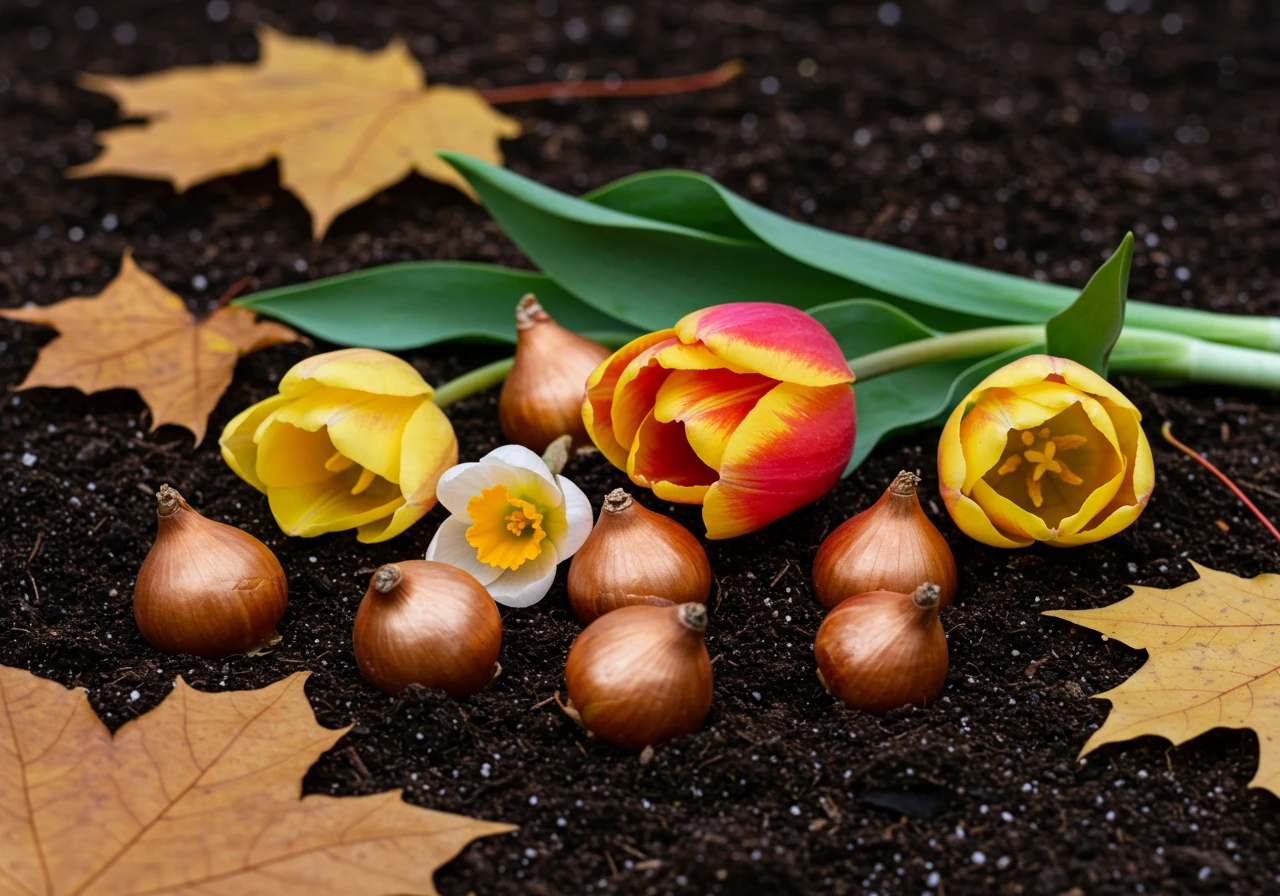
Okay, summer might have felt like a garden battlefield, but fall? Fall is planting party time! Seriously, this season is like a secret weapon for getting a head start on a gorgeous garden next year. Strategic fall planting isn't just about filling gaps left by summer casualties; it's about setting your future self up for less stress and more beauty. Think of it as investing in next spring's wow factor right now, maybe even in your Nepean or Manotick neighbourhood!
Why is fall planting so awesome here in Ottawa? The air is cool and crisp (finally!), which means much less transplant shock for new plants compared to the summer sizzle. But guess what? The soil is still warm from the summer sun. This cozy combo – cool air plus warm soil – encourages roots to grow strong and deep before the ground freezes solid. It's like giving your new plants a comfy head start to settle in over winter. Come spring, they'll be established and ready to burst forth with energy while spring-planted ones are still finding their feet. Less stress for them, less worry for you!
So, what should you plant? For Ottawa (we're mostly Zone 5a/5b), you have tons of great choices!
- Perennials: Think Coneflowers (Echinacea), Hostas (great for shady spots!), Sedum 'Autumn Joy', Black-Eyed Susans (Rudbeckia), or hardy Geraniums. These reliable bloomers come back year after year, getting bigger and better.
- Spring Bulbs: Oh, the joy! Planting Tulips, Daffodils, Crocus, Alliums, and Hyacinths now is like burying little treasures that will explode with colour when the snow melts. It's the ultimate delayed gratification and a fantastic mood booster come spring!
- Shrubs and Trees: Fall is ideal for planting many hardy shrubs like Lilacs, Dogwoods, Potentilla, or Spirea. Small trees like Serviceberry or Ornamental Crabapples can also establish well now, adding structure and often multi-season interest to your yard. For a professional touch with new plantings, consider garden installation services.
Here’s a pro tip that pays off big time: lean towards native or climate-adapted species whenever possible. Plants that naturally thrive in our region require less fuss – meaning less water (critical for avoiding future heat stress like we saw this summer!), fewer pest problems, and better support for local pollinators like bees and butterflies. Choosing the right plant for the right place is crucial, and thinking about hardy, suitable options is part of smart material selection for your landscaping projects. You can find helpful resources on native plants from organizations like the Rideau Valley Conservation Authority.
Before you dig in, make sure your planting area is ready. Clearing out old summer annuals, weeds, and debris is step one. If you're tackling a larger area or just short on time, getting help to prepare the space can make all the difference – our crews like the Metcalfe property cleanup service team can certainly get garden beds prepped for planting. Once clear, amend the soil with some quality compost for a nutrient boost and better drainage. Remember to water your new additions regularly until the ground freezes, even if it rains – those developing roots need consistent moisture to get established. This forward-thinking approach aligns with our philosophy; we're passionate about creating resilient, beautiful landscapes, and you can learn more about us and our approach on our site. While you're busy beautifying your garden beds, if your lawn needs a major overhaul beyond simple overseeding, keep in mind that professional sod installation for an instant green lawn is a great way to achieve a lush look quickly, often best done in the cool conditions of spring or fall. And even if you're a bit further out, know that comprehensive garden preparation, like that offered by our Marionville garden clean up service team, sets the stage perfectly for fall planting success. Get those shovels and bulbs ready – your future garden will definitely thank you!
Fall Garden Revival Timeline
Early Fall (Late Aug - Mid Sept)
Assess summer damage. Deep water stressed plants. Gently prune dead material. Begin lawn aeration and overseeding.
Mid Fall (Late Sept - Mid Oct)
Plant spring bulbs, hardy perennials, shrubs & trees. Divide overcrowded perennials. Continue watering new plantings. Apply fall lawn fertilizer.
Late Fall (Late Oct - Ground Freeze)
Clean up fallen leaves and spent annuals. Top up mulch layers. Continue mowing lawn as needed. Protect borderline hardy plants. Ensure evergreens are well-watered before freeze-up.
Ongoing
Monitor moisture levels and water as needed until ground freezes. Weed consistently. Enjoy the fall colours! Manage client projects through the customer portal.
Highlight Box: Quick Tips for the Savvy Ottawa Gardener
Caught your breath after that summer scorcher? Good! Late summer and early fall in Ottawa are fantastic times to give your garden some love and set it up for a glorious return next spring. Here are a few quick wins for your green space:
- Weed Ruthlessly (Before They Multiply!): Those pesky weeds are trying to set seed right now for a triumphant return next year – don't let them win! Yank 'em out, especially the ones getting ready to flower or disperse seeds. A little effort now saves *hours* of weeding next spring. If the weed jungle got a bit out of hand, especially after the summer stress, tackling a general property clean up can give you a fresh start.
- Mulch Like You Mean It: Remember that protective mulch layer you might have applied in spring? Now's a great time to top it up to 2-3 inches (keeping it away from direct stem contact). This insulates roots against the coming cold, helps retain the fall moisture soil needs, and keeps stubborn weeds down. Plus, crisp edges make everything look sharper! Getting both mulching and edging done really tidies things up for fall.
- Water Wisely, Not Wildly: Yes, it's cooler, but don't ditch the hose entirely! Plants, especially recent transplants, recovering lawns in areas like Barrhaven, and evergreens, still need consistent moisture until the ground freezes. Water deeply but less frequently than in peak summer. Check the soil moisture an inch or two down before watering – soggy soil is no good either! For more info, check the City of Ottawa's water conservation tips.
- Divide and Conquer Perennials: Got hostas taking over? Daylilies looking crowded? Fall is prime time to divide many overgrown perennials once the worst of the heat has passed. Carefully dig up the clump, gently separate it into smaller sections (each with roots and shoots), and replant or share the bounty! Need ideas for where to place your new divisions? Check out inspirational photos in landscaping project showcases like our online gallery.
- Plan Your Next Masterpiece (or Get Help!): Look around your yard. What worked this year? What flopped harder than a pancake? Now’s the perfect time to sketch out ideas for next spring. Maybe moving that sun-loving plant out of the shade? If the post-summer cleanup or planning feels like too much, don't sweat it! Professional help is available, even for larger tasks or if you're located a bit further out, requiring something like a dedicated Marionville property cleanup service. When you reach out to any service provider, rest assured that reputable companies handle your contact details responsibly, usually outlined in their operational standards, much like our own company privacy policy.
FAQ: Your Burning Questions About Post-Summer Garden Care in Nepean & Area
Relax, you've got time! While you can tidy up heat-damaged bits anytime, the main fall cleanup in Nepean and surrounding areas usually ramps up from late September through October, often after the first light frost. Focus on removing dead annuals and clearing leaves *before* heavy snow flies. Consistent fall garden maintenance tasks like this set you up for a healthier spring garden.
It's best to pull out those spent summer annuals (like petunias or marigolds) now. Leaving them can invite pests or diseases over winter. Toss disease-free plants onto your compost pile. Clearing these out also makes space for planting spring bulbs! If it feels like a big job, you can always get help with clearing beds like our Metcalfe yard clean up service offers. Our general Ottawa yard cleanup service covers this too.
For most garden plants (perennials, shrubs), hold off on fertilizing now; you don't want to encourage tender new growth that winter will zap. Your lawn, however, is different! Applying a specific fall fertilizer formulation is highly recommended in Ottawa. This helps roots grow strong over winter, leading to a greener spring. It's a key part of comprehensive fall lawn care.
Great question! For tender perennials or shrubs (like some roses or hydrangeas), add a thick layer (4-6 inches) of shredded leaf or straw mulch *after* the ground starts to freeze lightly. This insulates the roots. You can also wrap sensitive shrubs like cedars or boxwoods loosely in burlap to prevent winter burn and breakage. Need a hand? You can always get help with winter prep from services like our Marionville yard clean up service.
Yes, keep mowing as needed! Grass still grows in cooler weather, just slower. Letting it get too long before winter can lead to snow mould problems. Continue mowing until growth stops, usually sometime in late October or November. For the last couple of mows, you can raise the blade height slightly. If you're unsure about the best approach for your specific lawn type, feel free to reach out and contact us for tailored lawn advice.
Not quite yet! While you don't need to water as often as in summer, it's crucial to keep watering newly planted trees, shrubs, perennials, and especially evergreens until the ground freezes solid. They need that moisture to survive the dry winter winds. Give them a deep drink every week or two if we haven't had significant rain. Consistent moisture now prevents winter damage later.
Conclusion: From Summer Scorch to Fall Flourish – Let's Get Growing!
Whew! We've covered a lot of ground, haven't we? From diagnosing that summer heat hangover in your Nepean garden to the essential first aid, lawn recovery steps, and smart fall planting strategies, you're now armed with the knowledge to turn things around. The key takeaway is simple: *don't wait until spring!* Late summer and early fall in Ottawa provide the *perfect* conditions – cooler air, warm soil – to help your plants recover, strengthen your lawn, and get a head start on next year's beauty. Think of it as giving your garden a well-deserved spa treatment after a tough season.
Taking action now means less stress for your plants *and* less frantic work for you come springtime. You're essentially setting the stage for a healthier, more resilient landscape that’s ready to burst with life when the snow finally melts. So, roll up those sleeves, grab your tools (and maybe a pumpkin spice latte?), and use the tips in this guide to become your garden's fall hero.
Feeling inspired to tackle it yourself? Awesome! But if life is busy or the task list feels a bit daunting, we're here to help. Our team offers expert fall cleanup, lawn rehabilitation, and planting services across Ottawa, including neighbourhoods like Barrhaven and Manotick. Let us handle the heavy lifting so you can simply enjoy the crisp autumn air. Ready for a fall flourish?
